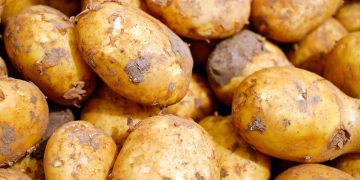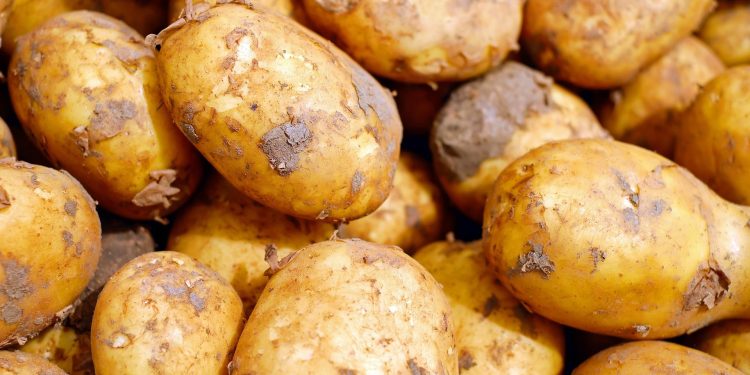In 2022, new capacities for storing vegetables and fruits were introduced. The total volume will be 350 thousand tons, such data are given in the study of the Center for Macroeconomic Analysis and Regional Forecasting of the Rosselkhoznadzor. This figure has become a record for the last five years. According to the results of last year, only 263.8 thousand tons were introduced. In 2017, vegetable storages for 346.1 thousand tons were introduced, in 2018 — by 174 thousand tons, in 2019 — by 147.8 thousand tons, in 2020 — by 298.1 thousand tons. At the moment, the capacity of one—time storage of potatoes, vegetables and fruits is 8.8 million tons, with the prospect of growth to 9.5 million tons by 2025. Whether this volume is enough for Russia and how the indicators will affect prices — in the material of Izvestia.
Priority of the borscht set
Increasing the capacity of vegetable storages, as well as any other infrastructure that ensures the preservation of crops, is a positive phenomenon, believes Denis Ternovsky, Doctor of Economics, leading researcher at the Center for Agri—Food Policy at the Institute of Applied Economic Research (IPEI) of the RANEPA.
— Historically, food prices fluctuate much more strongly than prices for other consumer goods precisely because of the inability to evenly distribute the available goods according to the time of consumption, – he says. — As a result, prices are low during harvesting, which is unprofitable for producers, and by the end of the season prices are rising, which already damages consumers. In the absence of storage facilities, producers also do not benefit from price increases — domestic products are largely spoiled, and the deficit is covered by imports.
According to the expert, the lack of storage capacity led to the fact that in 2021 the prices of potatoes and vegetables of the borscht set turned out to be significantly higher than the values for previous years.
— The expansion of vegetable storage facilities will help to stabilize prices throughout the year, reduce their level by reducing product losses and increase incentives for the production of additional volumes of products. In 2022, a good harvest of vegetables is expected — if it reaches 16 million tons excluding potatoes, then we will get a record value. This is reflected in prices: for example, in October potatoes cost 10% cheaper, and cabbage — 30% cheaper than the average for the last five years, taking into account inflation, — says Ternovsky.
In general, food prices in Russia and in the world are stabilizing, he notes.
— World food prices, according to FAO, are declining for the main commodity groups, with the exception of cereals. But the price increase in 2020-2021 has not yet been compensated: in October 2022, the FAO food price index was 2% higher than last year, and a third higher than the level of October 2020, — concludes Denis Ternovsky.
Breakthrough of import substitution
The record for the introduction of new vegetable storages is a direct consequence of the agrarian policy in the country, says Ekaterina Kosareva, managing partner of the analytical agency VMT Consult.
— From 2014 to 2022, it was possible to almost double the sown area – from 0.5 million to 0.95 million hectares. Next year it will exceed 1 million hectares. This is definitely a breakthrough. As a result, the country will have not only record grain harvests, but also fruit and vegetable crops. And this is despite the drought and unfavorable weather for agriculture in some regions. And storage rooms are needed for the harvest.
According to the interlocutor of the publication, all this means complete self-sufficiency in vegetables and fruits.
— Russia has withstood the sanctions blow, urgent problems of agricultural enterprises are being solved. Thus, Russian and Belarusian machinery is being actively purchased, the seed fund is increasing, seed producers are receiving support at the federal level. These were weak points that had not been paid attention to before and on which a lot of work is being done on import substitution in the industry right now. Storage of stocks will avoid price spikes of the “borscht set” closer to spring and will ensure stable exports, — Ekaterina Kosareva assesses the situation.
Export growth
The record-breaking commissioning of new vegetable storages can speak of two factors, says Artem Tuzov, Executive Director of the Capital Market Department of IVA Partners IC.
— Firstly, it is the struggle of networks with costs. Modern vegetable storage provides a longer shelf life, which allows chains to sell vegetables before they are written off due to spoilage, which increases the efficiency of networks and the quality of products on the shelves, – the analyst lists. — Secondly, increasing exports. After Russia achieved food security, there was a successful export of grain abroad. When the industry coped with grain exports, the export range began to expand at the expense of other crops. Here new vegetable storages were needed to service export capacities. Usually vegetable storages are located near cities, next to consumers, and then it was necessary to equip them near ports.
According to the expert, this year’s grain harvest is a record.
— However, this does not please farmers, as competition pushes the prices of their products down. But this pleases consumers: inflation in agricultural products is lower than in other areas,” he says.
The increase in vegetable exports outside the Russian Federation can only be welcomed, as well as the increase in the efficiency of vegetable storage networks, the interlocutor of Izvestia notes.
— In 2022, the world is facing a threat to the food security of poor countries. If Russia can solve this problem, it will be a huge humanitarian contribution of Russia to the world economy,” Artyom Tuzov sums up.
Grow and grow
The Financial Research Institute estimates that the demand of the agricultural sector of the Russian Federation for vegetable storage capacity is provided only by 30-40%, says Anna Buylakova, an analyst at Finam.
— Stable introduction of additional vegetable storage areas can help stabilize the selling price of fruit and vegetable products throughout the year, that is, reduce the effect of seasonal price appreciation. The lack of storage facilities affects the ability to preserve the harvest, and consequently, the volume available for sale by the end of the season.
According to experts, the annual growth rate is quite small:
“With a total capacity of 8.8 million tons, an increase of 350 thousand tons (+4%) will have a minimal positive impact on the food market,” she summarizes.
A source: https://nvdaily.ru































